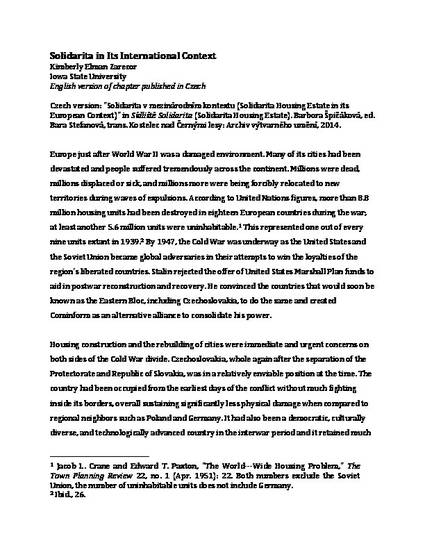
Europe just after World War II was a damaged environment. Many of its cities had been devastated and people suffered tremendously across the continent. Millions were dead, millions displaced or sick, and millions more were being forcibly relocated to new territories during waves of expulsions. According to United Nations figures, more than 8.8 million housing units had been destroyed in eighteen European countries during the war; at least another 5.6 million units were uninhabitable. This represented one out of every nine units extant in 1939.2 By 1947, the Cold War was underway as the United States and the Soviet Union became global adversaries in their attempts to win the loyalties of the region's liberated countries. Stalin rejected the offer of United States Marshall Plan funds to aid in postwar reconstruction and recovery. He convinced the countries that would soon be known as the Eastern Bloc, including Czechoslovakia, to do the same and created Cominform as an alternative alliance to consolidate his power.
Available at: http://works.bepress.com/kimberly_zarecor/20/

This is the original English version of a chapter published as "Solidarita v mezinárodním kontextu" in Sídliště Solidarita. Barbora Špičáková, ed. Bara Stefanová, trans. Kostelec nad Černými lesy: Archiv výtvarného umění, 2014.